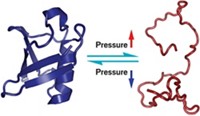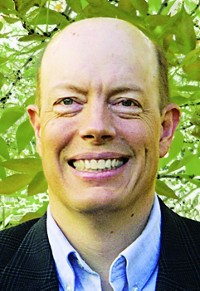Advertisement
Grab your lab coat. Let's get started
Welcome!
Welcome!
Create an account below to get 6 C&EN articles per month, receive newsletters and more - all free.
It seems this is your first time logging in online. Please enter the following information to continue.
As an ACS member you automatically get access to this site. All we need is few more details to create your reading experience.
Not you? Sign in with a different account.
Not you? Sign in with a different account.
ERROR 1
ERROR 1
ERROR 2
ERROR 2
ERROR 2
ERROR 2
ERROR 2
Password and Confirm password must match.
If you have an ACS member number, please enter it here so we can link this account to your membership. (optional)
ERROR 2
ACS values your privacy. By submitting your information, you are gaining access to C&EN and subscribing to our weekly newsletter. We use the information you provide to make your reading experience better, and we will never sell your data to third party members.
Analytical Chemistry
Nobel Laureate Signature Award for Graduate Education in Chemistry
Sponsored by Mallinckrodt Baker
by William G. Schulz
January 25, 2010
| A version of this story appeared in
Volume 88, Issue 4
Student Sang-Hee Shim and her mentor Martin T. Zanni have been described as a remarkable pair who have produced a body of extraordinary science. Together, at the University of Wisconsin, Madison, they have revolutionized the technology of two-dimensional infrared spectroscopy. And with the new technology, they have performed a groundbreaking study of amyloid fibers.
Shim made four high-impact contributions during the first four years of her Ph.D. study. The first three were major advances in the means of obtaining multidimensional spectra. Working with another exceptional graduate student, David B. Strasfeld, she developed the first pulse shaper operating directly in the mid-IR wavelength regions, which is an important wavelength range for characterizing the vibrational motions in biomolecules. Although directly shaping pulses of visible light has been possible for more than a decade, shaping IR light has required cumbersome indirect methods. The direct IR pulse-shaping scheme that Zanni and Shim invented now allows the measurement and control of ground-state vibrational motions with unprecedented accuracy and flexibility.
Shim built a femtosecond oscillator and optical parametric amplifier from scratch and incorporated the device into a revolutionary technique for collecting 2-D IR spectra that is much more powerful and straightforward than standard methods. Her technique involves the IR pulse shaper to create arbitrary pulse sequences and is more accurate, faster, and easier to use than previous approaches.
She also worked with a group at the University of Colorado, Boulder, to demonstrate the same principles for collecting 2-D spectra in the visible wavelength regions.
“Any of these three technical accomplishments amount to a first-rate Ph.D. thesis,” writes one nominator for this award, but Shim did more. She applied these new techniques to execute a previously impossible study of the kinetics of the amyloid peptide involved in many human diseases.
The importance of amyloid kinetics in disease has stimulated enormous activity, but the structural changes occurring during aggregation into fibers have remained elusive. Although these changes are extremely difficult to study with NMR spectroscopy or X-ray crystallography, 2-D IR spectroscopy has the structural and temporal resolution to follow them. The rate of data collection in 2-D IR spectroscopy had been too slow to measure amyloid kinetics—before Shim’s pioneering work. Her new method changed all of that by allowing the rapid collection of spectra to follow the aggregation kinetics directly. Her results provide what is perhaps the most detailed structural kinetics of any amyloid protein.
Shim received B.S. and M.S. degrees in chemistry from Seoul National University and a Ph.D. in physical chemistry from the University of Wisconsin, Madison. She is now a postdoctoral fellow studying super-resolution microscopy at Harvard University and Howard Hughes Medical Institute. Her awards include the Mary Fieser Postdoctoral Fellowship at Harvard, the Kwanjeong Scholarship for Graduate Studies in Korea, and the Outstanding Chemistry Student Award at Seoul National University.
Zanni, her preceptor, received bachelor’s degrees in chemistry and physics from the University of Rochester in 1994 and a Ph.D. in chemistry from the University of California, Berkeley, in 1999. After a postdoctoral stint at the University of Pennsylvania, he moved to Wisconsin, where he is now the Meloche-Bascom Associate Professor of Chemistry. He is the recipient of numerous awards, including the 2001 ACS Nobel Laureate Signature Award for Graduate Education in Chemistry (2001) for his Ph.D. work as a student under the guidance of Daniel M. Neumark at UC Berkeley. Zanni is the first to receive this award as both student and mentor.
Shim will present the award address before the Division of Physical Chemistry.






Join the conversation
Contact the reporter
Submit a Letter to the Editor for publication
Engage with us on Twitter